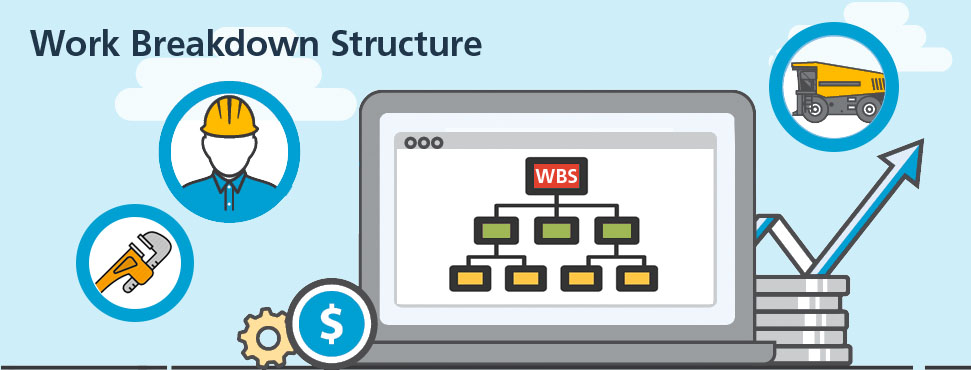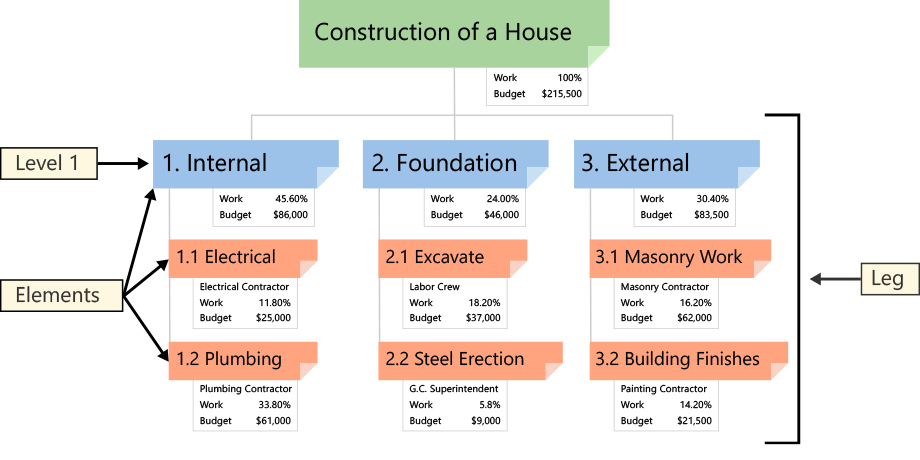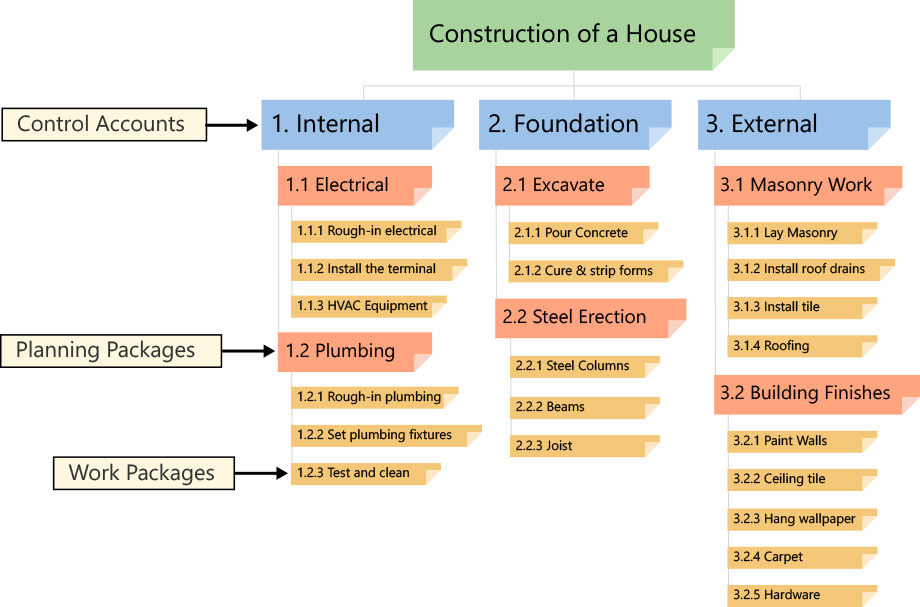This website uses cookies to improve user experience.

➔Free 30-day WBS Software Trial
Breaking work into smaller tasks is a common productivity technique used to make the work more manageable and approachable. For projects, the Work Breakdown Structure (WBS) is the tool that utilizes this technique and is one of the most important project management documents. It singlehandedly integrates scope, cost and schedule baselines ensuring that project plans are in alignment.
The Project Management Institute (PMI) Project Management Book of Knowledge (PMBOK) defines the Work Breakdown Structure as a “deliverable oriented hierarchical decomposition of the work to be executed by the project team.” There are two types of WBS: 1) Deliverable-Based and 2) Phase-Based. The most common and preferred approach is the Deliverable-Based approach. The main difference between the two approaches are the Elements identified in the first Level of the WBS.
A Deliverable-Based Work Breakdown Structure clearly demonstrates the relationship between the project deliverables (i.e., products, services or results) and the scope (i.e., work to be executed). Figure 1 is an example of a Deliverable-Based WBS for building a house. Figure 2 is an example of a Phase-Based WBS for the same project.

Figure 1 – Deliverable Based Work Breakdown Structure
In Figure 1, the Level 1 Elements are summary deliverable descriptions. The Level 2 Elements in each Leg of the WBS are all the unique deliverables required to create the respective Level 1 deliverable.
In Figure 2, a Phase-Based WBS, the Level 1 has five Elements. Each of these Elements are typical phases of a project. The Level 2 Elements are the unique deliverables in each phase. Regardless of the type of WBS, the lower Level Elements are all deliverables. Notice that Elements in different Legs have the same name. A Phase-Based WBS requires work associated with multiple elements be divided into the work unique to each Level 1 Element. A WBS Dictionary is created to describe the work in each Element.

Figure 2 - Phase Based Work Breakdown Structure
A good WBS is simply one that makes the project more manageable. Every project is different; every project manager is different and every WBS is different. So, the right WBS is the one that best answers the question, “What structure makes the project more manageable?”.
A good Work Breakdown Structure is created using an iterative process by following these steps and meeting these guidelines:
Caution: It is possible to break the work down too much. How much is too much? Since cost and schedule data collection, analysis and reporting are connected to the WBS, a very detailed WBS could require a significant amount of unnecessary effort to manage.
There are many WBS software tools available. Some of them are based on mind mapping and others are drawing tools. You can read about these tools in this WBS software review.
Here is an example of how to make a WBS with MindView:
The Work Breakdown Structure is used for many different things. Initially, it serves as a planning tool to help the project team plan, define and organize scope with deliverables. The WBS is also used as the primary source of schedule and cost estimate activities. But, its biggest contributions to a project are is use as a description all of the work and as a monitoring and controlling tool.
Work Packages
Figure 3 shows the House Project Work Breakdown Structure expanded to Level 1, 2, and 3 Elements. The lowest Levels of each Leg and Branch of the WBS are called Work Packages. Work Packages cover information related to the deliverable, such as owner, milestones, durations, resources, risks, etc. This information is described in the WBS Dictionary.
Planning Packages
There is another type of Work Package called a Planning Package. When the project management plan is approved, scope is known, but not necessarily all of the details. In order to apply the 100% Rule and capture all of the scope, Planning Packages are created. It is understood that as details are defined, the Planning Packages eventually evolve to Work Packages. In the House Project, the project manager knows that the house will have fixtures, but at the time construction begins, there is only a fixture allowance and no fixtures identified. Once the fixtures are determined, the associated Planning Package becomes a Work Package. This planning process is call Rolling Wave Planning and is a from of Progressive Elaboration.

Figure 3 – WBS Work Packages and Control Accounts
Control Accounts
The other application of the WBS is as a monitoring and controlling tool. This is accomplished by defining Control Accounts. Control Accounts are WBS Elements at which the project plans to monitor and report performance. The Control Accounts can be any Element in the WBS. In the House Project, the project manager decides that the project risks associated with using subcontractors can be better managed if the project reports performance for each subcontractor. To monitor their performance, Elements 3.1, 3.2 and 3.3 have been identified as Control Accounts. However, the remaining work in Elements 1.0 and 2.0 will be performed by company resources with less risk and the project does not feel like monitoring and controlling is needed at lower Levels. To assist with the monitoring and reporting, project management information tools are used to collect, analyze and report information at any Element within the WBS.